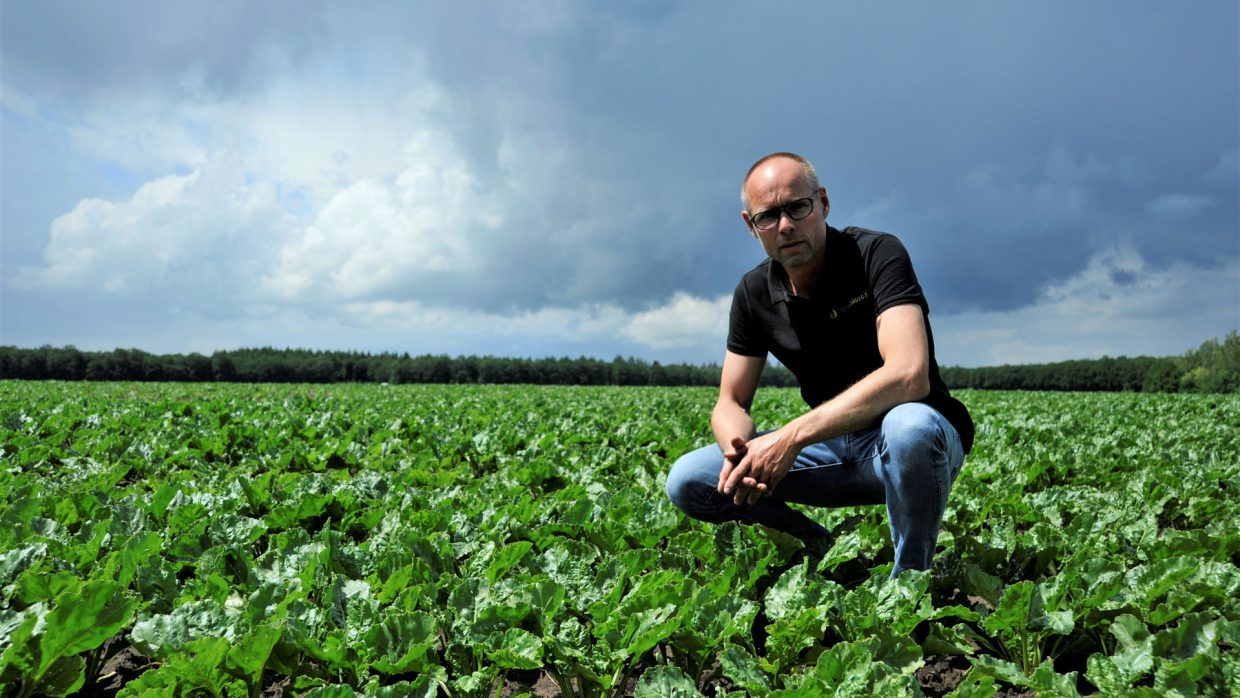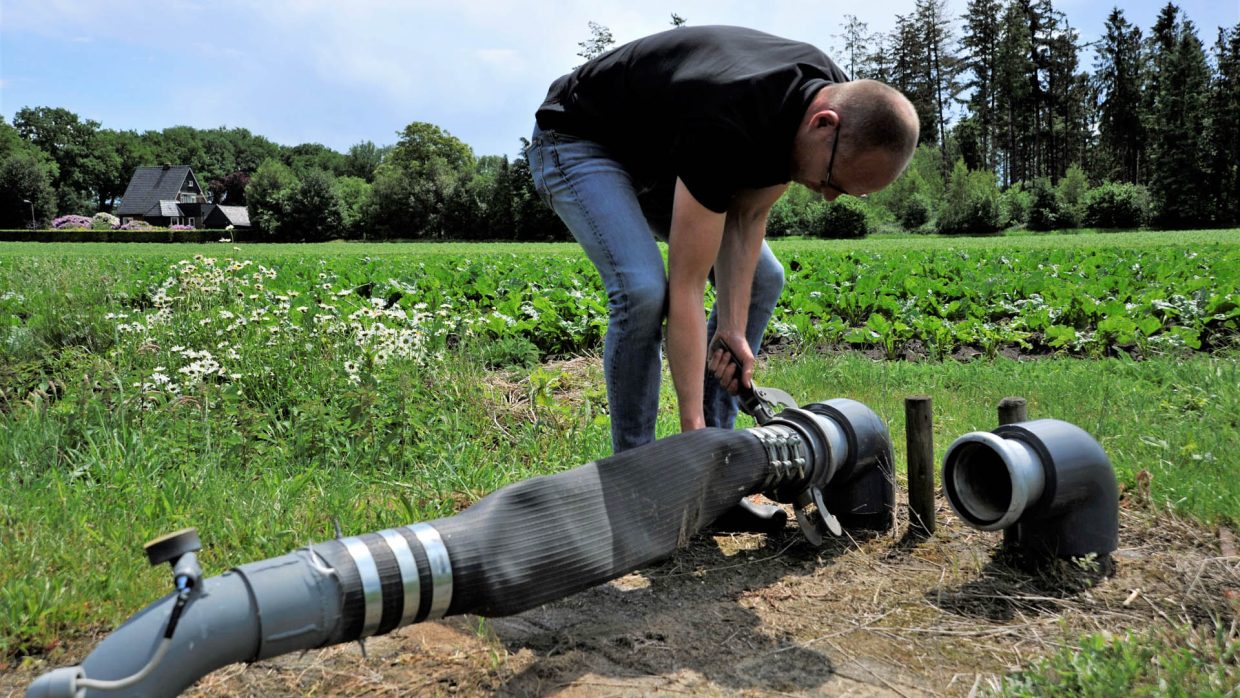Farmer Jan Reinier de Jong installed 200 solar panels on his farm buildings 10 years ago, making him one of the first in the Netherlands to do so. Today there are 1,060 panels on his buildings, generating 310-kilowatt peak (kWp). And storage has grown since investing in 295-kilowatt hour batteries in 2015, to an impressive 126 lithium battery cells today, giving him the choice of delivering electricity to the market when the price is high, or using it to run his potato storage facility.
“I saw, and I still see, the future in renewable energy,” he says. “And now the business is at the forefront of sustainable energy.”
Mr De Jong is the fourth generation to work the 130ha farm in Odoorn, Drenthe, where he grows starch and seed potatoes, brewer’s barley and sugar beet. Environmentally friendly agriculture is very important to him. He owns a 20ha Daalkampen solar park, and was co-initiator of the solar farm pool in his municipality.
The role of agriculture
The UN Climate accord states warming of the planet must be kept to less than two degrees Celsius. EU Member States have committed to reducing CO2 emissions by at least 40 percent by 2030, and by 2050 energy consumption must be entirely based on renewable sources.
In a recent energy webinar, senior researcher in Urban-Rural relations Andries Visser notes, that if we want to achieve all of that and give tomorrow’s generations a future on this planet, everyone will have to contribute, including agriculture. “We need to generate a total of 35 Terawatts (TWh) of renewable energy on land,” he says. “Our calculations show that we can produce 11TWh if we place 1,000sq metres of solar panels on every farm in the Netherlands. If, in addition to that, we place a 25m to 35m tall wind turbine, we can generate an additional 4TWh to 5TWh. Which means the agricultural sector can generate half of the total amount required.”
Renewable power irrigation
The energy transition offers opportunities for agricultural entrepreneurs, not only in the production of renewable energy, but in the utilisation of that energy on farm.
And Mr De Jong seized that opportunity in 2018, by investing in irrigation which runs on the power from his solar panels. “To be honest, we didn’t irrigate before that,” he says. “We would have one bad year out of five and considered that to be an operating risk.” But after the drought of 2018, when yield struggled to reach 25 tonnes of seed potatoes per hectare – half of his usual yield, he decided to invest in renewable powered irrigation.
I say, and see, a future in electrification.
Jan Reinier de Jong
“With the investment in wells, pumps, pipes and reels all powered with renewable electricity, we can irrigate precisely, across 95ha of the 130ha farm,” says Mr De Jong.
Social entrepreneurship
Mr De Jong is pleased with the advantages in irrigation. “The benefits are clear to me. It is cheaper than irrigating with diesel, the pump requires less maintenance and there is less CO2 and nitrogen emissions. We irrigate exactly where we want to, so we save water – that also has a social impact.”
But it must deliver returns, he emphasises. “It’s great to be socially responsible, but ultimately it’s about the finances. I want to improve our operations and be more profitable.”
However, as water becomes scarcer, and legislation more complex, can his investment be recovered? “You can choose to dig your own well. This requires a permit, but then you are your own boss,” he says. “The costs are around £5300, but, when you amortise that over 20 years, it’s doable; especially if you’re talking about a reasonably large area of farmland.”
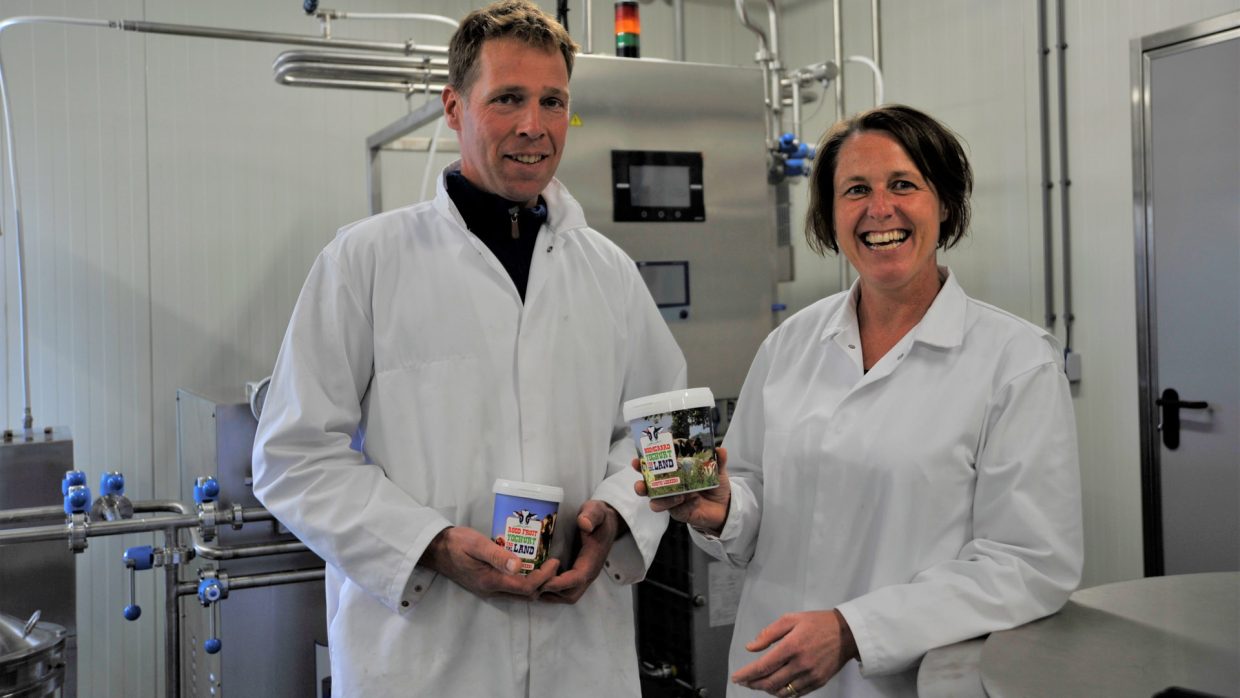
The dairy plant
Tom and Ellis Lugtenberg, from Olst, Overijssel, have run a small dairy processing plant on their land since the beginning of 2023. They started the enterprise in partnership with a restaurant and can process 1.1million litres of milk into yogurt or butter annually. In the first year, 80 000 litres of milk came from their own 150 Meuse-Rhine-Yssel (MRIJ) cows.
Making our own dairy products makes us less dependent on the milk processor.
Tom Lugtenberg
But there is still capacity for other interested parties, explains Tom. “We have set it up on a large enough scale to produce not just for individual consumers, but also for bigger customers, like hospitals and schools.”
The Lugtenberg’s see this as the future of their business. “By processing our own dairy products, we add value to our unique produce, making us less dependent on liquid milk sales, and giving us a more stable income stream,” says Tom. “That makes it possible for us to invest in sustainability, farm more extensively in harmony with nature, and focus on local production.”
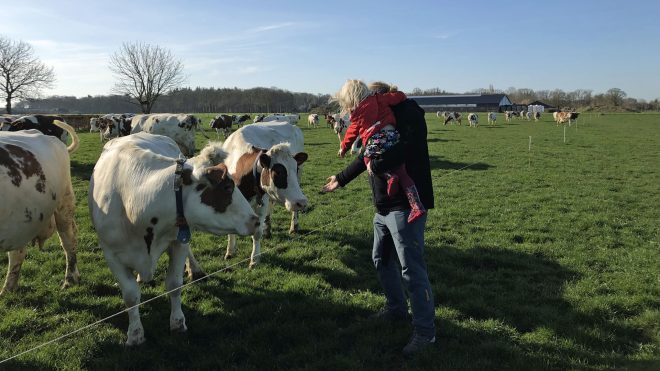
Social pressure
“Societal demands are going to play an increasingly large role in agriculture,” says Willem Lageweg, director of the Food Transition Coalition (TCV) and who is actively involved in the Farmers Council. “The Netherlands Environmental Assessment Agency has estimated the environmental costs of agriculture in the Netherlands at seven billion euros annually. Add a further £7.8 billion in health care costs that are the result of unhealthy eating, making a total of £14 billion in the National Budget, that must be paid by the taxpayer, and it’s clear why social pressure on farming and food processing companies will only increase in the future.”
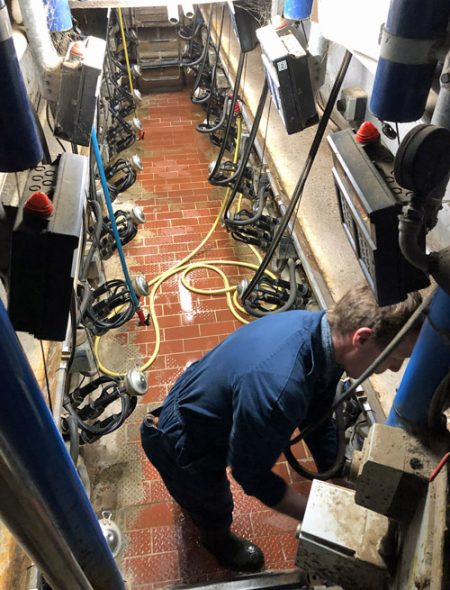
Farmers and the agricultural industry will have to be more alert to changes in society and respond to them. The TCV and the Farmers Council, for example, call in their Managing Space manifesto (Managing Space, see sidebar) for a more multifunctional way of farming, that can help stabilise farm incomes, and helps farmers receive more appreciation from society, explains Mr Lageweg. “Production alone is no longer the future for most Dutch farmers.”
Change of plan
Recognising the changing landscape first, was Tom’s wife, Ellis. “We have always had an intensive farm, and for six generations, the focus has been on achieving a high price per litre of milk per cow,” says Tom. “But Ellis came from outside the sector, and having studied retail management, began to ask questions.
“We started experimenting with a more extensive approach using less fertiliser and more herb-rich grassland. And what did we find? The less silage we needed, the more sustainable it was as well as a saving in fuel.”
The introduction of phosphate restrictions also contributed to more sustainable operations. “As a result, we are keeping less stock and we keep our cows longer,” he says. The average age at cull is now around eight years. In the Netherlands, the national average is around six.
“And although our milk production per cow may well be less, because we keep them longer, our cows give just as much as the national average over their lives. We are at 42,000 litres per cow over a lifetime, and the national average is 35,000 litres per cow,” says Tom.
The Lugtenbergs have discovered that sustainability and returns go well together. “With a vision and mission that meet the wishes of society, we can earn a good living.”
Managing Space
The Food Transition Coalition (TCV) and the Farmers Council drew up a manifesto: Managing Space. Which assigned a clear management role for the government. “The Netherlands is small and densely populated,” says co-initiator and TCV board member Willem Lageweg. “In short, our position is that function follows soil. That means that we should produce in areas of fertile agricultural land. In less productive ground, we can give precedence to other uses, like nature and housing.”
He sees a management role for the government in that process. “The focus must be placed on farmers who want to change – we’re talking about structural change. Increasing attention is being given to the area-focused approach, and we think that is the right way to go.”
In addition, technological innovation is an important pillar, he says. “Electrification is one example, as is data. We must see how we can limit negative impact, like nitrogen emissions, with the help of data. Technological developments should concentrate on achieving that.”


